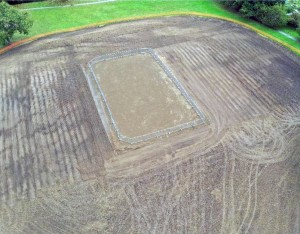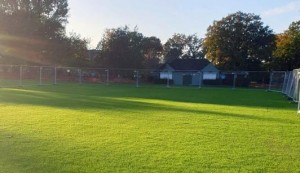Club Focus – Locksbottom quite literally invest in the grass roots
Thursday 3rd December 2020
If you’ve never played at Locksbottom CC, you may not instinctively picture their location. To help you with that, the ground is a stone’s throw away from the Princess Royal University Hospital, or less than two miles west of Orpington train station.
As such, Locksbottom is one of the many clubs that fall within the densely populated, and highly competitive, London borough of Bromley.
So, what are the key stats?
- Saturdays: Two teams in the KCVL (three in 2021) and one friendly team
- Sundays: Two friendly teams
- Mid-week: friendly timed / 40-overs / 20-overs and Dyno T20
- Juniors: up to 15 years with All Stars Cricket starting in 2021
And despite the best efforts of 2020 to curb the development of the club, each of these areas continue to grow.
Those of you that are keen followers of the recreational cricket scene on Twitter may well have seen that the club have embarked on a substantial ‘fine turf’ project this year, which is precisely why we have caught up with the project mastermind and Club Treasurer, David Killpack…
David, the photographs are fascinating, what exactly have you done?

In short, we reprofiled and enhanced the entire playing surface at Tugmutton Common.
More specifically, the cricket square has been heavily renovated and extended to include a further four pitches. This was long overdue, as we regularly host five games per week and have done so now for a number of years meaning that the existing 10 weren’t sufficient.
We’ve then dealt also with the aggressively bumpy outfield, by levelling and reseeding the whole thing.
‘Aggressively bumpy’ – that’s not an every day description of an outfield, is it?
Members of the Club have highlighted some real concerns over player safety, particularly for bowlers and fielders. Some of the worst places on the playing surface were the transitions from outfield to square. Fortunately, the Committee is solely made up of current playing members who are very aware of the challenges, so we took the option to tackle it head on as we wanted to meet our aspirations as a club.
The feasibility study that we commissioned at the start of the project back in 2017 solidified our position to make substantial improvements for the long term.
The improvements will provide a real difference in the playing experience at Tugmutton, from seasoned village cricketers, Area representatives and aspiring cricketers, through to the development and enjoyment of newer players to the sport.
Words don’t do justice to the scope of the work that has taken place (but these photo galleries do) Was there any trepidation in undertaking a project of this size?
In terms of concern for the project, absolutely. It is by a long way the largest project and financial undertaking in the club’s history and it is a relatively niche industry with a lot of natural variables to consider. We knew we did not have the knowledge and skills in the Club which is why the fine turf consultant was such a crucial piece of the puzzle. They helped us understand the technical risks in the project and we prepared for a number of eventualities that lucky did not materialise. Matching this approach with some exceptional contractors to implement the works, the outcome (especially the square) is of a remarkably high standard.
How did the club approach the fundraising for the project?

We were fortunate to receive some grant funding through Sport England, which we had to work closely with the local authority to secure due to the lease and license agreements in place. But that was only part of the process, we still had to raise significant funds ourselves for the project to be viable.
There was an acceptance as a club that there wasn’t going to be a magic solution, so instead we committed to a series of ‘little and often’ fundraisers, and used some previously built up savings to get us over the line.
I often had bizarre internal discussions with myself being project lead (trying to get the best for the project) and Club treasurer (taking care of income and expenditure, and pushing best value for the Club), but the Committee were excellent in taking independent approaches to challenge the decision-making process throughout.
So finally, congratulations on what you’ve achieved with this project and thank you for taking the time to talk to us about it. If you could give your 2017 self any advice, what would it be?
Communicate well. It might sound obvious, but I learnt to become almost relentless. It can be a challenge, because it doesn’t come naturally to me, and it can be time consuming, but when there are so many cogs involved it is easy for things to slip by without someone constantly checking in. Equally with our own members, I quickly realised they needed constant reminders and updates, even when there was slow progress, otherwise people assume that nothing is happening.
Have confidence in conviction. Stay strong to your honest assessments of the Club’s:
- capacity to positively embrace change,
- financial health,
- collaborative culture in the Committee,
- fundamental approach to provide cricket
Be prepared for delays. We started this in 2017, it was due to happen in 2019 but the project actually went ahead in 2020.
It can be painful process; but it’s possible.
